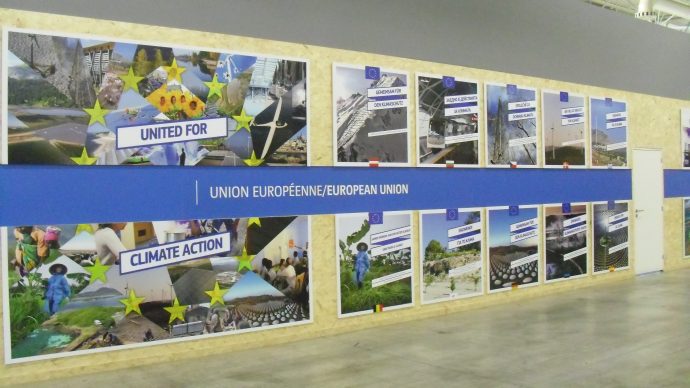I dag blev Europa-Kommissionens forslag til en fordeling af reduktionerne mellem medlemsstaterne præsenteret.
Reduktionerne gælder de aktiviteter, som ikke er dækket af EU’s kvotesystem.
Danmark skal ifølge forslaget reducere 39%. Det er i den høje ende, men det samme gælder vores nabolande og andre af de mest velsltående lande i unionen. Luxemburg og Sverige ligger helt i toppen og skal minimere udslip med 40%.
Bulgarien skal i den anden ende af skalen slet ikke reducere udledningerne, mens Rumænien skal skære med 2%.
Se fordelingen under følgende pressemeddelelsen fra Europa-Kommissionen.
In 2014, EU leaders agreed to reduce greenhouse gas emissions by at least 40% by 2030 compared to 1990 levels across all sectors of the economy.
Today's proposals present binding greenhouse gas emission targets for Member States from 2021-2030 for the transport, buildings, agriculture, waste and land use and forestry sectors. These national targets contribute to the overall EU target.
The new framework is based on the principles of fairness, solidarity, cost-effectiveness and environmental integrity. Member States will be at the forefront of deciding how to implement the measures to meet the agreed 2030 target.
The Commission also presented a strategy on low-emission mobility setting the course for the development of EU-wide measures on low and zero-emission vehicles and alternative low-emissions fuels.
EU Vice-President in charge of the Energy Union Maroš Šefčovič said:
"The Energy Union is delivering. With the proposed reform of the Emissions Trading System last year and today's proposal on greenhouse gas emissions targets for Member States, we anchor the 2030 Energy and Climate framework in legislation. We are also setting our transport system firmly on the path towards zero-emissions. Today's package shows that we are mobilising all our policies towards the competitive, circular and low-carbon economy that we promised in the Energy Union Strategy".
EU Commissioner for Climate Action and Energy Miguel Arias Cañete said:
"The EU has an ambitious emissions reduction target, one I am convinced we can achieve through the collective efforts of all Member States. The national binding targets we are proposing are fair, flexible and realistic. They set the right incentives to unleash investments in sectors like transport, agriculture, buildings and waste management. With these proposals, we are showing that we have done our homework and that we keep our promises.
EU Commissioner for Transport Violeta Bulc said:
"Transport accounts for a quarter of Europe's greenhouse gas emissions and is a main cause of air pollution. The transition to low-emission mobility is therefore essential to reach the EU's ambitious climate objectives and to improve the quality of life in our cities. It is also an opportunity to modernise the EU's economy and keep Europe's industry competitive. The Strategy we adopted today presents a roadmap towards low-emission mobility and will give an impetus to that shift."
In the EU, efforts have already started to align private investments with climate and resource-efficiency objectives.
EU financial instruments are significant contributors to climate funding. Over 50% of the investments approved so far are climate-related. As part of the Investment Plan for Europe, the European Fund for Strategic Investments is on track to deliver on mobilising at least EUR 315 billion in additional investment in the real economy by mid-2018.
In addition, the Commission actively works to ensure that EU budget spending is aligned with climate objectives. At least 20% of the current EU budget will be spent on climate action.
Her er fordelingen i Kommissionens forslag:
Belgium -35%
Bulgaria -0%
Czech Republic -14%
Denmark -39%
Germany -38%
Estonia -13%
Ireland -30%
Greece -16%
Spain -26%
France -37%
Croatia -7%
Italy -33%
Cyprus -24%
Latvia -6%
Lithuania -9%
Luxembourg -40%
Hungary -7%
Malta -19%
Netherlands -36%
Austria -36%
Poland -7%
Portugal -17%
Romania -2%
Slovenia -15%
Slovakia -12%
Finland -39%
Sweden -40%
United Kingdom -37%















